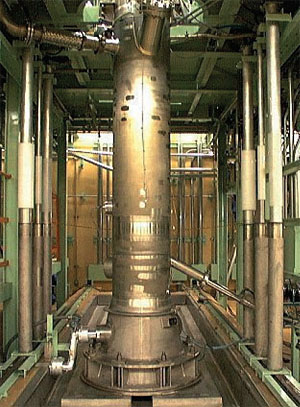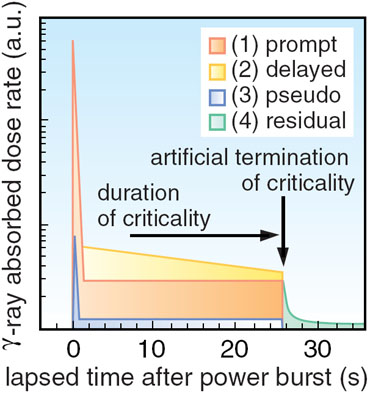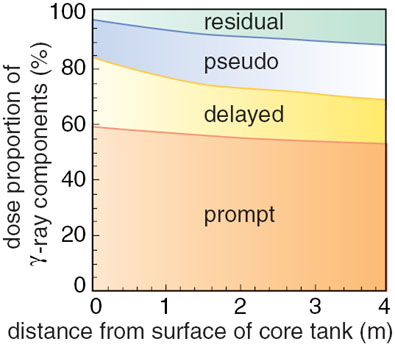When a criticality accident occurs, the large number of neutrons and gamma-rays from the explosive chain of fission reactions cause serious, often fatal, exposure to workers in proximity to the accident scene. Studies on neutron and gamma-ray dosimetry in such criticality accidents of solution systems have been performed in JAERI using the Transient Experiment Critical Facility (TRACY, Fig. 3-1). Our recent study ascertained that component analysis of the gamma-ray absorbed dose on the basis of gamma-ray emission behavior in criticality accidents was necessary for accurate gamma-ray dosimetry. The gamma-rays observed in criticality accidents of solution systems are classified into four components, as shown in Fig. 3-2. Previous studies, however, accounted for only the prompt component gamma-rays. These studies assumed the delayed, the pseudo, and the residual component gamma-rays were negligible. This assumption is incorrect, and such evaluations were found not to provide precise dosimetry.
For accurate criticality accident dosimetry, dose proportions of the above four gamma-ray components were first evaluated. In this evaluation, the prompt, the delayed and the pseudo components during criticality were classified by computational analyses, and the residual component after the termination of criticality was experimentally determined. The gamma-ray absorbed doses were then verified to be correctly evaluated by comparison between the analytical and experimental results. Lithium tetra borate (7Li211B4O7) thermoluminescent dosimeters (TLDs), whose sensitivity to gamma-rays is equivalent to that of human muscle, were placed around the TRACY core tank in the experiment to examine the spatial variation of the dose proportions.
This evaluation confirmed that although the prompt component provided the majority of the total absorbed dose, the other components should not be neglected, and that the dose proportions varied with the distance from the core tank (Fig. 3-3). The component analysis of the gamma-ray absorbed dose could quantitatively clarify the contribution of the dose components, which should be excluded, for accurate evaluation of gamma-ray exposure in criticality accidents and thus improve the accuracy of criticality accident dosimetry. |


